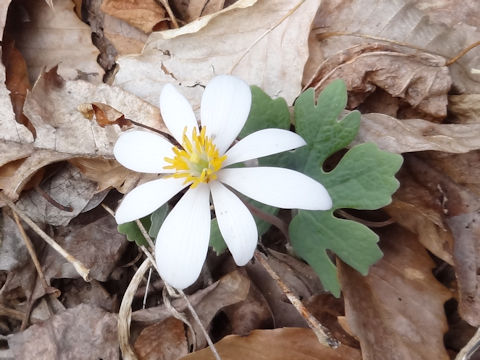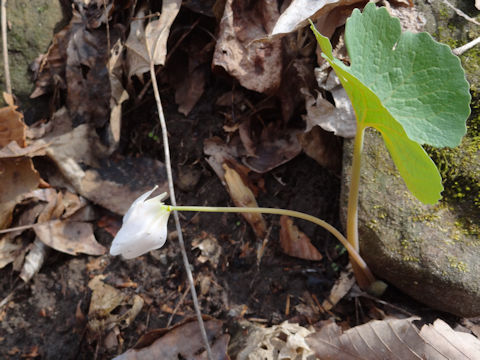
|
The Bloodroot (Sanguinaria canadensis) belonsg to Papaveraceae (the Poppy family). It is a perennial herb that is native to eastern North America. It is the only species in the genus Sanguinaria, and most closely related to "snow poppy" (Eomecon chionantha)。 This herb grows in dry woods, thickets and floodplains, and up to a height of 20-50 cm. It has one large basal leaf, up to 25 cm across, with five to seven lobes. It start to bloom before the foliage unfolds in early spring, from March to May. The flowers have 8-12 delicate white petals, many yellow stamens, and two sepals below the petals, which fall off after the flowers open. They open in sunlight and pollinated by small bees and flies. The sap was once used by Native Americans for dyes. The rootstock is caustic and poisonous if ingested, but has been used medicinally for its antiseptic and emetic properties.
|

